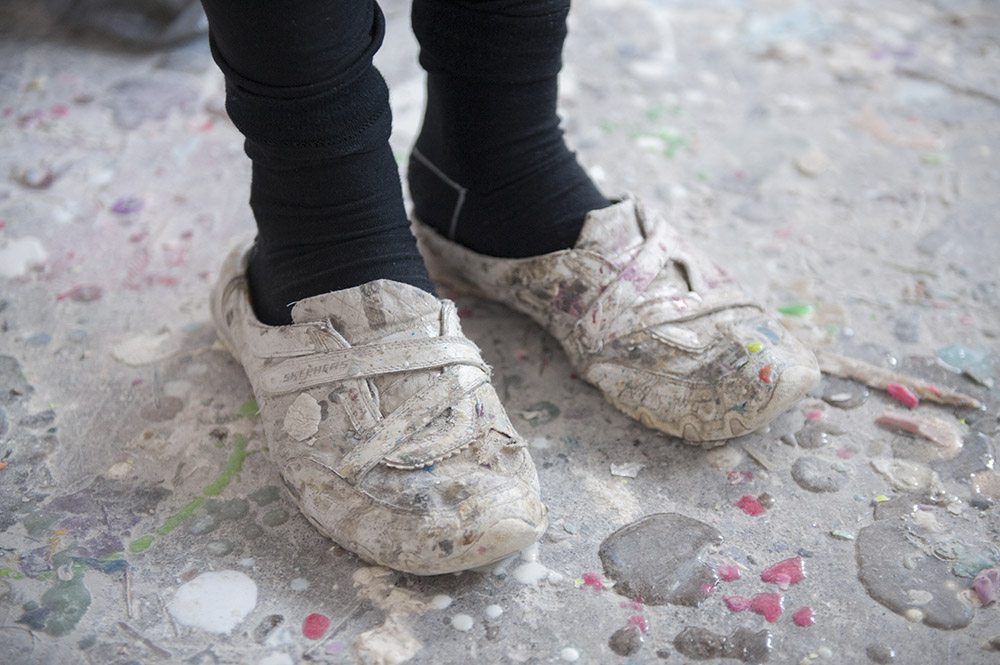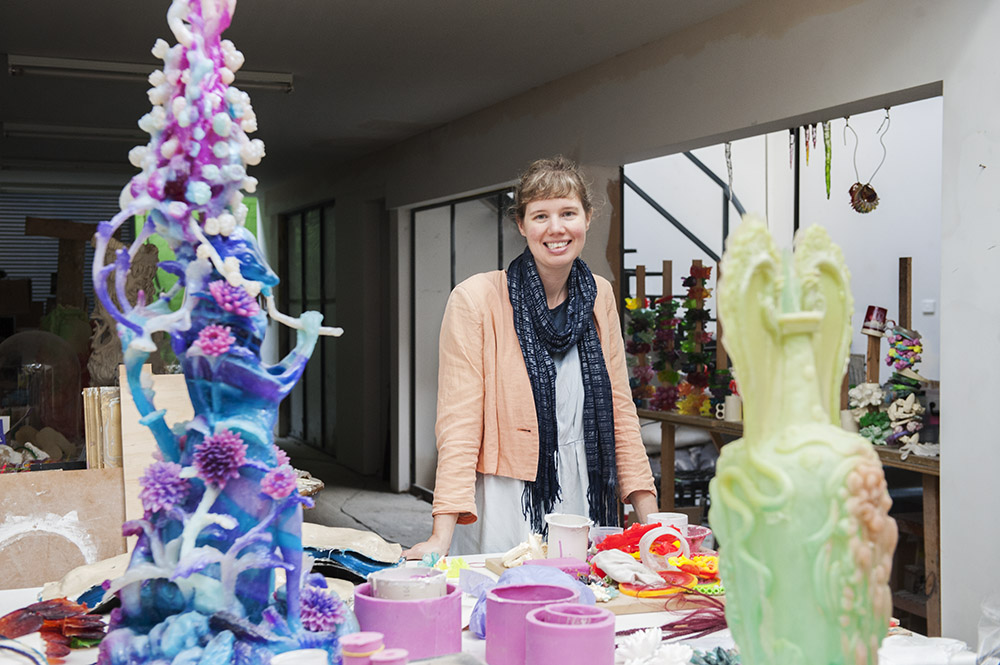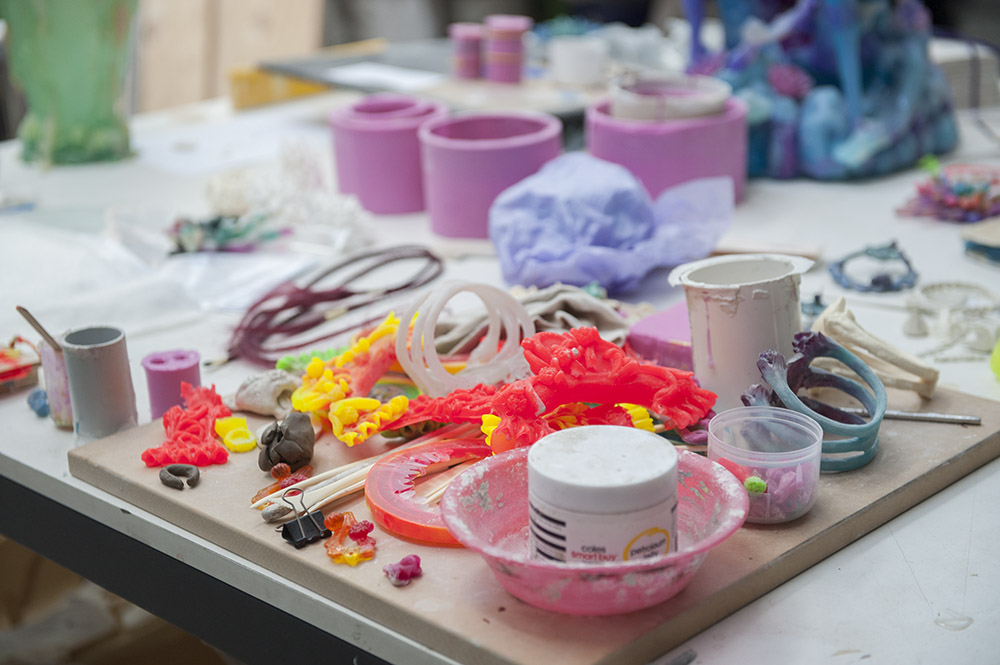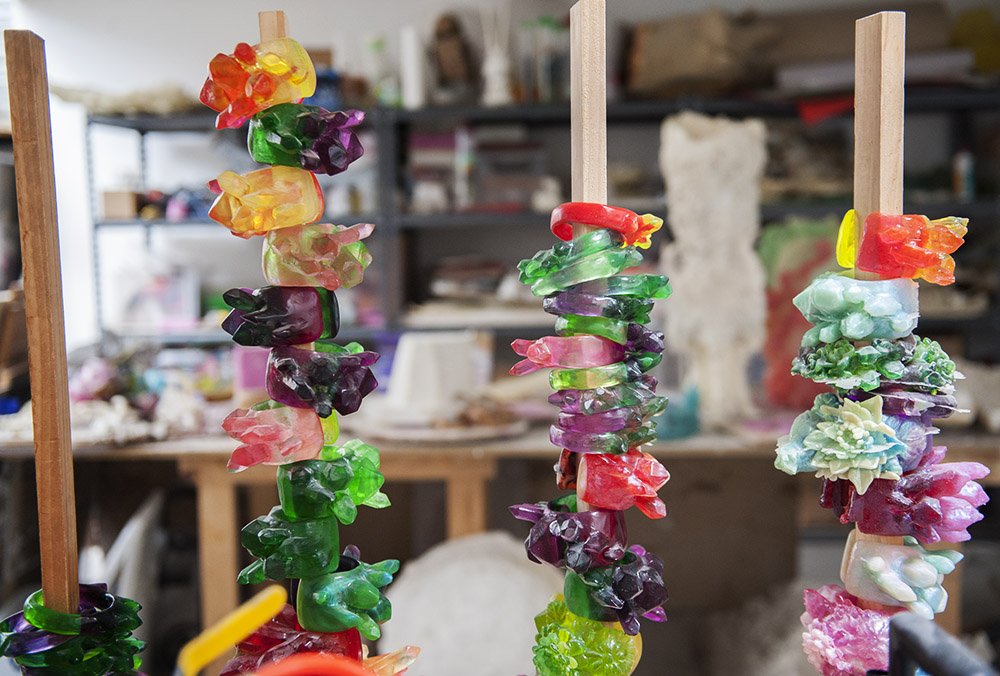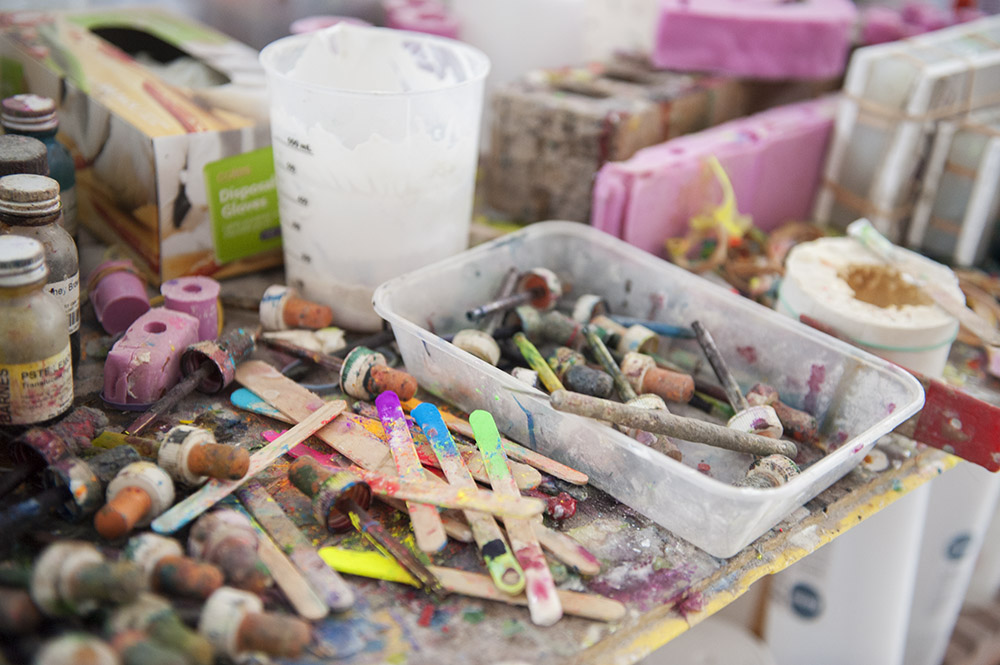Interview: Mel Macklin
Mel Macklin inhabits a magical world.
Tucked away in a studio in Montmorency, this graduate of the visual arts creates a style of dreamy illustrations that wouldn’t look out of place inside the pages of a children’s book – It’s a land full of pastel-hued girls with big hair and even bigger eyes.
Mel Macklin Photograhed by David Heath
The talented artist has been creative since she was a small child and credits her family with encouraging and discovering her talent. “I was very fortunate to know that I was always going to be an artist and no one ever said that I couldn’t, or that I shouldn’t.”
But it was only while she was attending art school that she discovered the work of Mark Ryden and a signature style blossomed.
Macklin: “You grow up thinking that you can’t play with dolls forever or that you can’t have your head buried in a book of myths forever, but it was almost like, ‘well this guy is’. He made the impossible seem possible.”
There’s an effervescence to Macklin’s tone that sits perfectly alongside her 'Blyth'-esque illustrations. When she confides that she’s not long since finished tidying her studio, her uplifting lilt is enough to inspire Makers to wish that we could have mucked in and helped clean the workspace, certain that we would only stumble upon hidden treasures, like a grown up Easter egg hunt.
After a childhood spent in Gipsland and teenage years whiled away in the Northern Territory (where the self proclaimed ‘petulant brat’ attended art school), Macklin moved to the U.K and began work as an arts and humanities teacher at an all girl’s school in London. While she may have only recently resettled back into the outskirts of Melbourne, it’s immediately evident that Britain still holds a special place in her heart, “I miss it everyday,” she confides, “I feel like when I left, I left a little part of me behind.” Beatrix Potter country has left its indelible mark on her work.
Salty Tears and Shipwrecks by Mel Macklin
Macklin: “When you grow up reading fairytales full of pine forests, it [Europe] feels like all of your favourite stories are stepping off the page; it was quite magical to me. I feel like it’s not necessarily the country that you’re born in is the one that you have a natural kin-ship with. And I think it can be quite difficult when you have experienced other places, not to feel like Voldemort and his Horcruxes, (laughs) to give you a really bad analogy.”
Macklin speaks in sweeping illustrative terms. Her time abroad is liked to visiting Narnia, her itinerant lifestyle is that of a snail - “I felt like I was carrying around all my worldly possessions on my back, but as long as I had my paints and my pencils I’d be ok.” And when it slips that this creative once toyed with the idea of becoming a children’s book author and illustrator, we’re not left feeling surprised.
After a return to Oz in 2009, Mel and her husband David set up home in the Northern Territory where she began selling her wares at a local market. Although the tightly knit creative community in Darwin warmly welcomed her return, it wasn’t long before the couple decided it was time to set up a more permanent base in Victoria.
Mel has settled easily into Melbourne life and for the moment her days are spent sketching - With work sold in various markets around the city, walking her dogs and building up her Etsy store. There was a recent collaboration with local lipstick brand Shanghai Suzy and many other fantastical endeavors in the pipeline.
Macklin: “I was 17 when I started art school and had a really set idea of what art should be. It was all a very idealistic way of thinking; I was inspired by the Pre-Raphaelites and all of those very romantic painters and didn’t really pay a whole lot of attention to the practical side of stuff. I wish I did but I was probably quite young and it was hard for me to grasp the idea of, ‘in order to do this you need to grow up and practice the fundamentals of things'."
With her childlike imagination and beautiful illustrations, Makers hopes that Mel Macklin never really “grows up.”
Of Fir Trees and Little Queens by Mel Macklin




